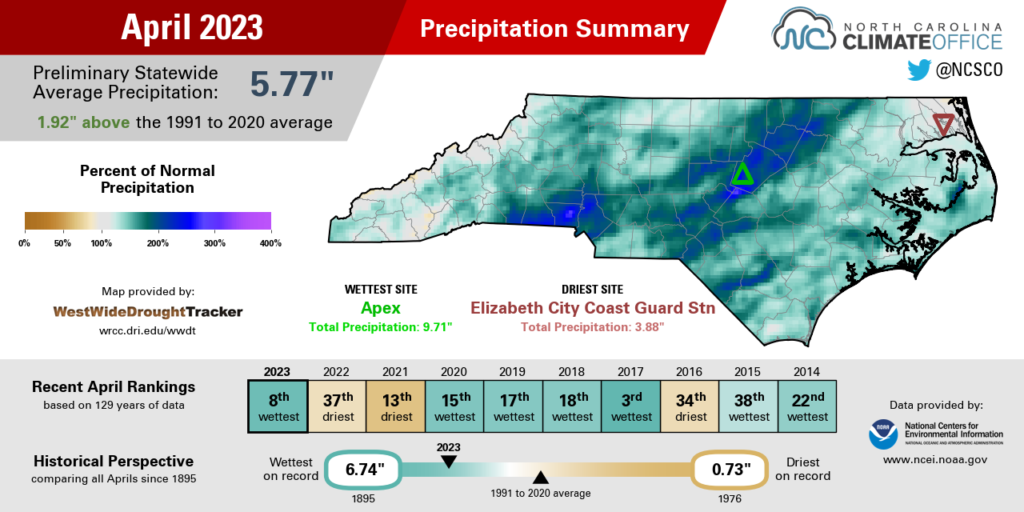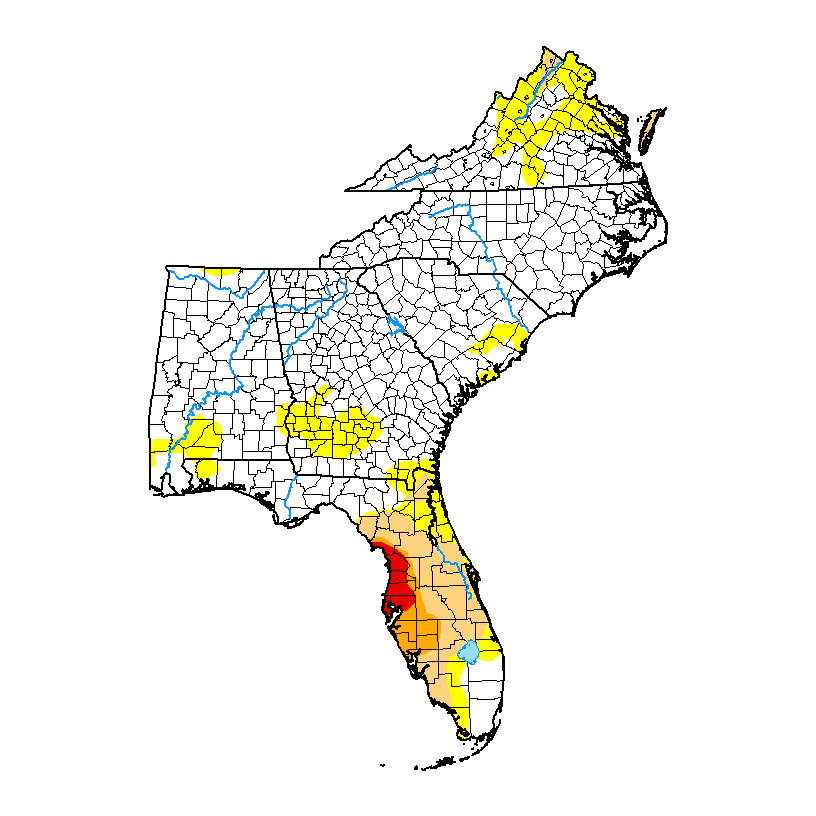-

NOAA released their monthly climate statistics for the United States today. They showed that for most of our region, precipitation was wetter than normal, although some areas were near normal. The driest areas were southwest Georgia and northern Virginia. The temperature was mostly near or slightly above normal, but no records were set in the…
Posted in: Climate summaries -

The multiple atmospheric river events in California this year have caused massive areas of flooding that has damaged trees by suffocating their root systems. This is similar to damage that we have seen here in the Southeast with Hurricanes Ian this past year and Hurricanes Irma and Matthew in previous years. The result of this…
-

The latest 7-day QPF map shows that rain amounts this week should be relatively light as we are in southerly flow with winds off the Gulf of Mexico. There is a chance of showers almost every day but they should be scattered and will not bring large amounts of rain. Severe weather is not expected…
Posted in: Climate outlooks -

The monthly climate summary for North Carolina for April 2023 is now available from the North Carolina State Climate Office. It includes a discussion of the very wet April they had and how it reduced drought in the state. You can view it at https://climate.ncsu.edu/blog/2023/05/wet-weekends-continue-in-a-shower-soaked-april/.
Posted in: Climate summaries -

As the global temperature warms up in the future, we can expect to also see changes in related variables like degree days, growing season length, and plant hardiness zones, which are tied to minimum temperatures. The Washington Post has an interesting map that compares the expected plant hardiness zones across the United States from the…
-

Recent rains have put quite a dent in the Southeast drought this week. All drought has been removed from Alabama and Georgia and has decreased in Virginia and Florida, while North Carolina is free of all dry conditions and only a lingering area of abnormally dry (D0) conditions remains in South Carolina. Puerto Rico also…
Posted in: Drought -

According to Clint Thompson of Specialty Crop Industry, the Georgia peach harvest this year is going to be very small compared to normal. This is due to the combination of unusually warm temperatures in winter, which allowed the peach trees to bloom much earlier than usual, and two devastating frosts in mid-March which destroyed a…